Last Updated on April 11, 2021
It was the last day of our 3-day itinerary to Hampi. We had already spent three days soaking in the heritage and history of Hampi.
We were waiting with our luggage at a small tea stall near the Hampi Bazaar waiting for a bus to take us to Hospet from where we were to proceed to Bangalore. The sun had just gone down and the whole of Hampi bazaar was bustling with shopkeepers, locals, and tourists, both Indian and foreign.
Points of interest
The previous day was Diwali. A lot of leftover crackers and rockets were whizzing around. We, a little bit tired from the three days of walking around, were just taking in the scene and enjoying hot pakoras and tea. The tea stall was empty, we being the only customers.
Suddenly, we were joined by a group of around 10 people, kids, men, and women. This was their first day in Hampi and they had hired a van for the day that had cost them Rs. 1000. They had been promised to be shown about 25 ‘points’ and only 20 were shown and they wanted part of their money back. The driver was trying to pacify them telling them he would show the rest of the ‘points’, the next day.
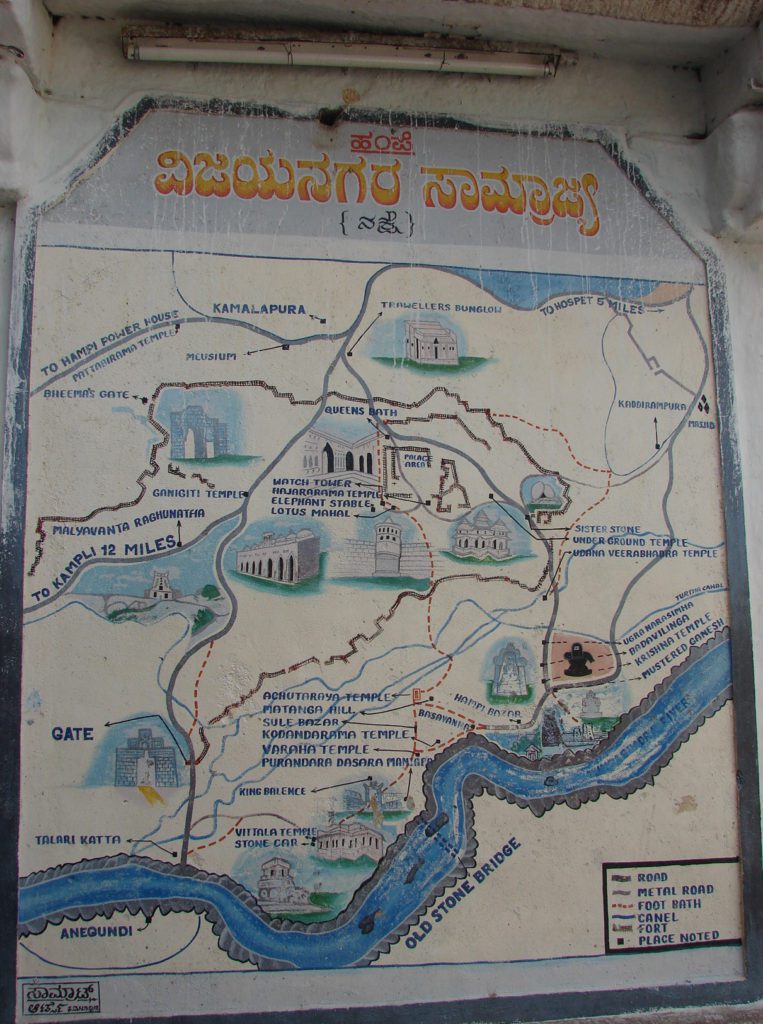
A small crowd had now assembled at the tea stall, some taking sides of family and others supporting the driver in his cause. By the time our bus came. We could not know whether they got their money back or they compromised on seeing the ‘points’ the next day.
While travelling back to Bangalore, I was reminded of a quote by G.K. Chesterton. “The traveller sees what he sees. The tourist sees what he has come to see. “
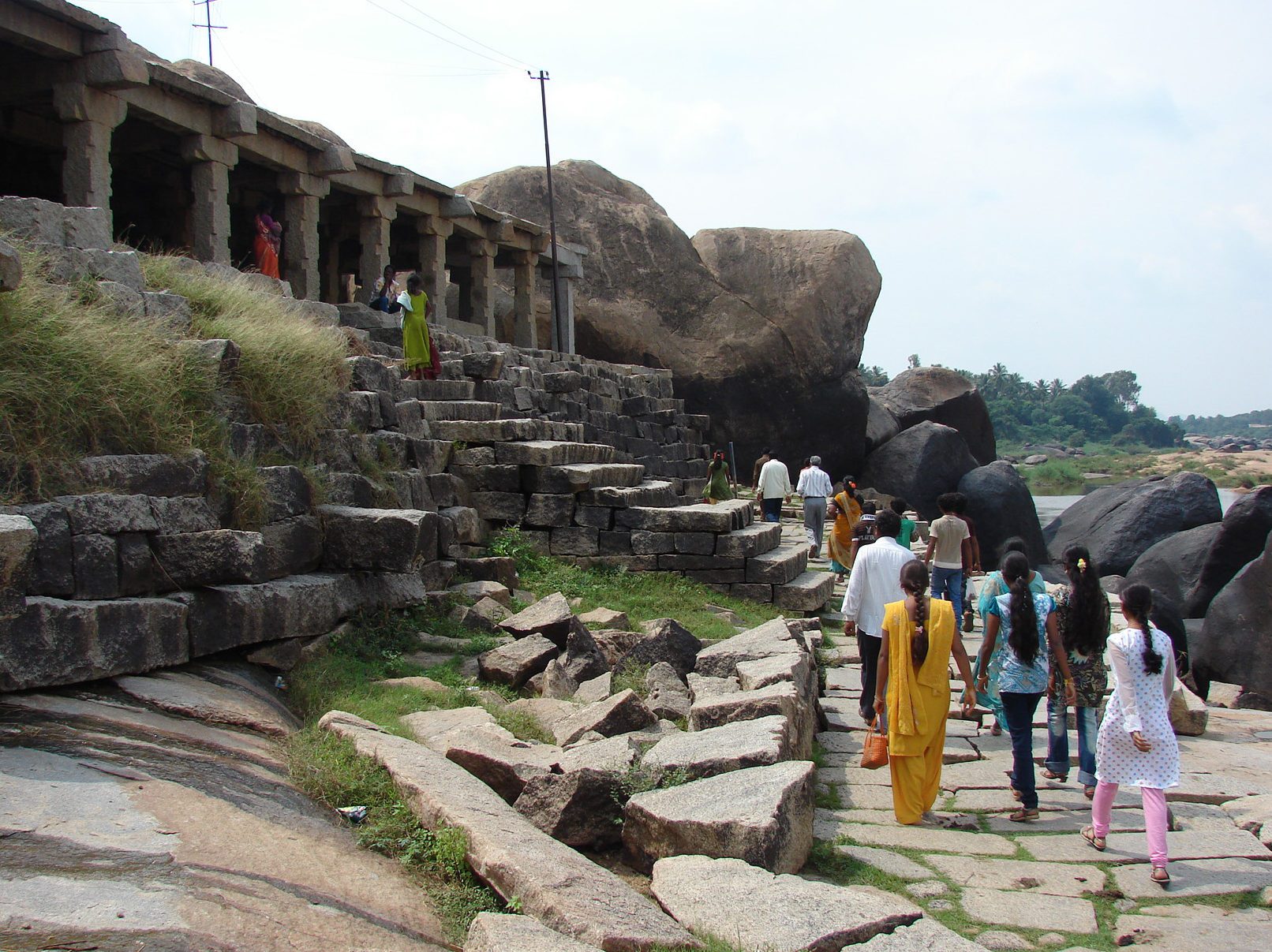
So were we travellers or tourists?
A little bit of both, maybe.
Before our trip to Hampi, we did a lot of research. As loyal tourists we had scoured the old issues of all the travel magazines we had stacked up, took printouts of the maps and any information regarding the structures in Hampi from the net to make sure that we had taken note of all the ‘points’ of interest and more importantly, read a lot of blogs on Hampi.
As travellers, we have also tried to go a bit offbeat sometimes, walking on those sidetracks that would take you nowhere discovering new ‘points’ of interests.
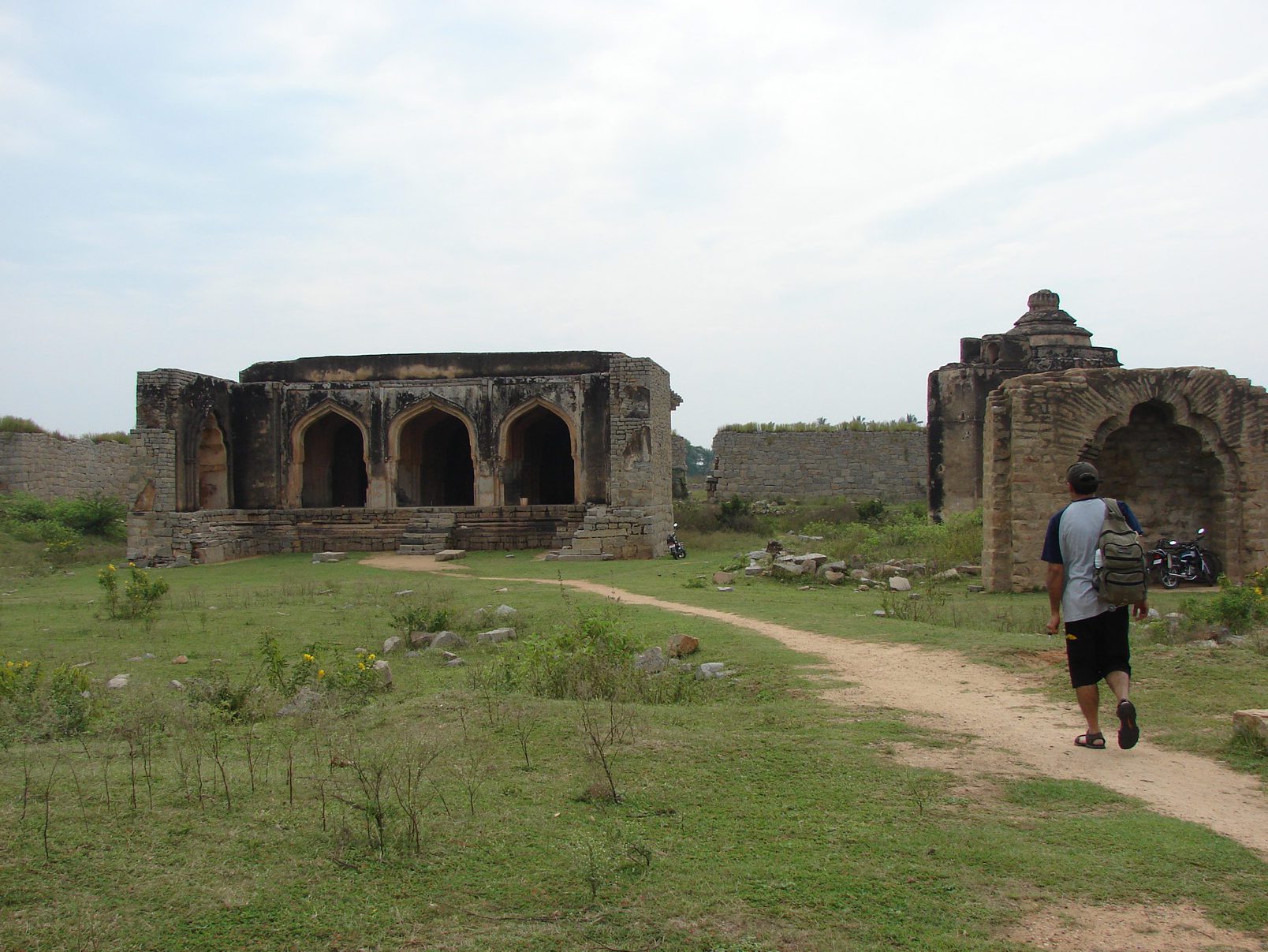
Hampi had always been on our travel list for a very long time.
Where is Hampi located?
Hampi, a UNESCO declared World Heritage Site, is a temple town located in northern Karnataka. Hampi is easily accessible from both Bengaluru and Hyderabad. Hospet is the nearest town.
A little bit of the history of Hampi
Little did Hakka and Bukka, two brothers and soldiers in the employment of Muhammad-bin-Tuglaq, know that seeing a fox being driven away by rabbits would lead them to the establishment of an empire on the banks of the Tungabhadra river. Once, while walking by the banks of Tungabhadra river, they saw the strange sight of a fox being chased away by rabbits. They then met a sage and told him about the strange event they had witnessed.
The sage’s name was Vidyaranya. He told them that the land they stood on was very powerful and any city built at this spot as the capital of a kingdom would repulse attacks from even the most powerful of kings. Thus, the city of Vijayanagara (city of victory) or Vidyanagara (named after sage Vidyaranya) was born.
Hakka and Bukka wanted to build a huge kingdom with palaces, temples, and forts. But Sage Vidyaranya wanted to fix an auspicious moment to dig the foundation for the city. The brothers waited for that moment and suddenly they heard the sound of a conch shell. Thinking it was the announcement of the auspicious moment they started digging the foundation.
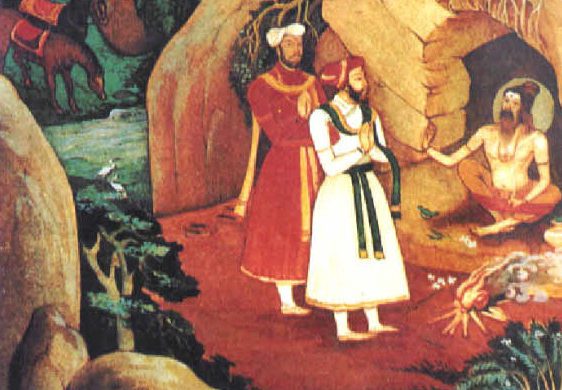
But then they heard a second conch sound. Confused they went to see their Guru who said that the first sound was made to announce the sunrise and the second sound was made by Vidyaranya to announce the right moment which, if they had followed correctly, would have led to the kingdom to last 3600 years.
The rabbits chasing the fox could be just a story. But the empire of Vijayanagara founded in 1336 lasted for only 360 years. Vijayanagara was ruled by many dynasties including the Sangama, Saluva and the Tuluva. The descendants of Hakka and Bukka belonged to the Sangama dynasty. All the fortifications and irrigation work owe much to their efforts. They also managed to overthrow the Muslim rulers.
Golden age
The greatest of the Vijayanagara rulers, Krishnadevaraya, belonged to the Tuluva dynasty. He ruled till 1529 and his time was considered to be the golden age.
Several Portuguese travellers and traders who visited Vijayanagara wrote detailed reports about its glory. Domingos Paes (1520–22) who visited Vijayanagara during Krishnadeva’s reign, was fascinated by the greatness of Vijayanagara’s fortified urban landscape, its markets, temples and the royal centre. Paes’ detailed description of the city of Vijayanagara is of immense help for identifying and interpreting the still impressive ruins of Vijayanagara which once was, according to Paes, as large as Rome and “the best-provided city of the world”.
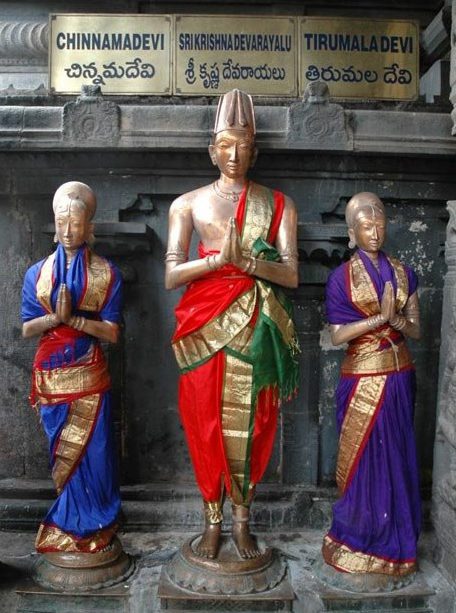
But after Krishnadevaraya’s death, his descendants struggled to keep the invaders out. Vijayanagara was destroyed by the united armies of the central Indian Sultanates in the battle of Talikota in early 1565. The Muslim invaders took just 5 months to demolish and loot all those magnificent palaces, forts and temples which were built over the years.
These magnificent ruins, which are now declared as a world UNESCO heritage site, are situated in Hampi.
Our 3-day itinerary to Hampi
So armed with all the paraphernalia, walking shoes, suntan lotion, maps, guidebooks and a lot of enthusiasm, we boarded a bus from Bangalore to Hospet, the nearest town to Hampi.
We spent three days among these preserved symbols of our past. We have designed the perfect 3-days itinerary to explore Hampi. And if you have more time, do not miss out on exploring the ruins of Badami, Aihole, Pattadakal and Bijapur.
To read more about our day-wise Hampi adventures, click on the links on the hover boxes below.
Day 1- The Touristy Approach
Day 1 we decided to take a touristy approach. We boarded a KSTDC bus conducting a one day guided tour to all the major points
Day 2 – Discovering Hampi on foot
Day 2 we decided to discover Hampi on foot and just walk around the heritage structures on our own and take in the sights as they came in
Day 3 – Discovering Hampi on a moped
Day 3 was our last day in this surreal landscape. There was only one agenda in mind – explore the ruins of Hampi on a moped.


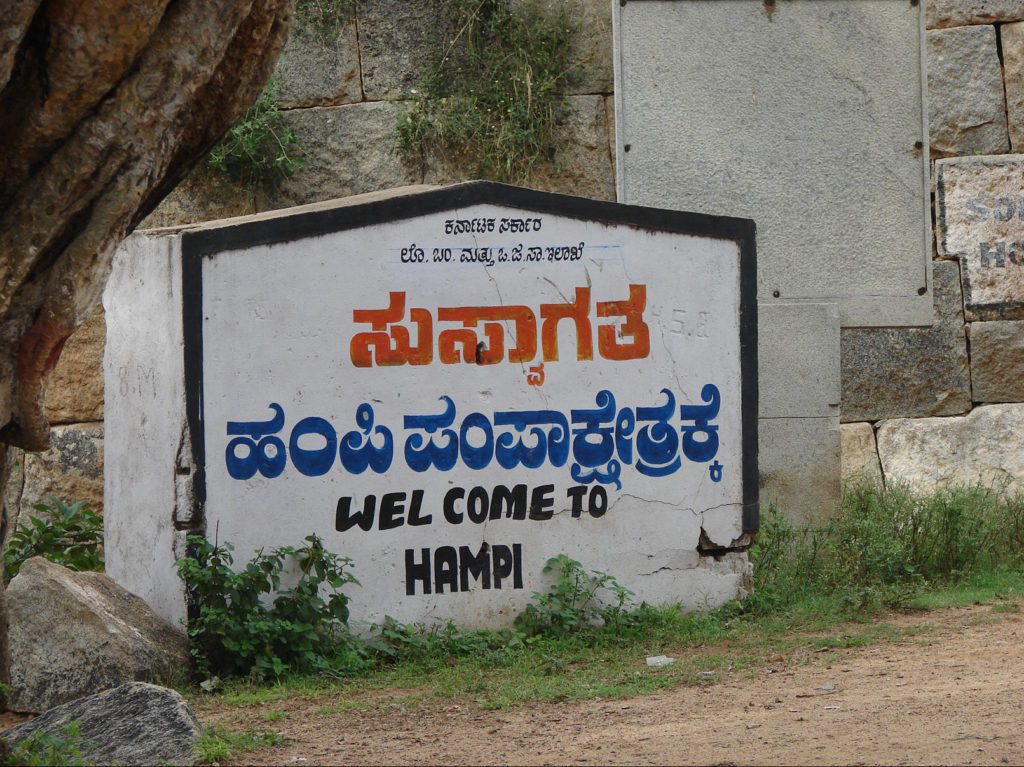


4 Comments
Waiting for the next part… Enjoyed the history too…
I was contemplating a trip to Hampi, when I see this post!
Thanks for sharing, waiting for the next posts..
Hampi is a must visit for a photographer like you. The landscape, the sunrise (and sunset), the street life, the boulders, the wildlife, and the heritage sites can keep you busy for days. It is a photographers paradise.
Nice blog 🙂 i found it to be very informative; keep posting and thanks for sharing 🙂